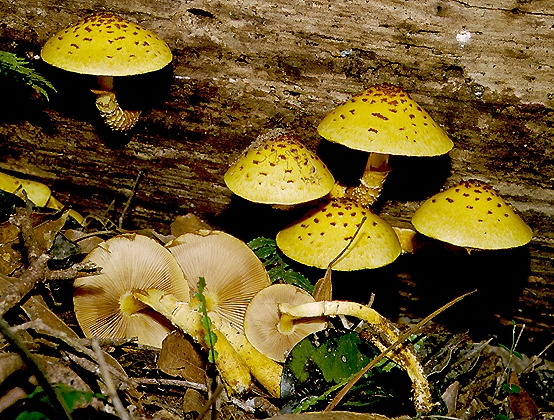
Pholiota aff. cerifera (P.Karst.) P.Karst.

Common name: None.
Description: The caps are up to 10 cm in diameter, convex and strongly glutinous. The cap colour is warm orange-brown, with brown scales embedded in the thick layer of gluten that is spread over the cap. The gills are adnate and cinnamon-brown and are at first protected by a creamy white to pallid brown veil. The stem is 1015 cm long and is up to 1 cm thick; it is brown to orange-brown and its surface is shaggy with adpressed scales; there is also a zone with veil remnants. The stem is dry.
The spores measure 610 × 46 µm, are ellipsoidal, smooth, have a germ pore and are brown.
Substratum: This species of Pholiota always occurs on rotting logs in rainforest. The fungus is sometimes found in twos or threes but it usually erupts in large numbers and is a very spectacular find.
Distribution: Known from Queensland and New South Wales, but similar species are found in Victoria and Tasmania.
Notes: This species seems close to the European Pholiota cerifera; however, just as so many Australian fungi resemble overseas species but are in fact different, there is every possibility that this species of Pholiota will also prove to be new.
